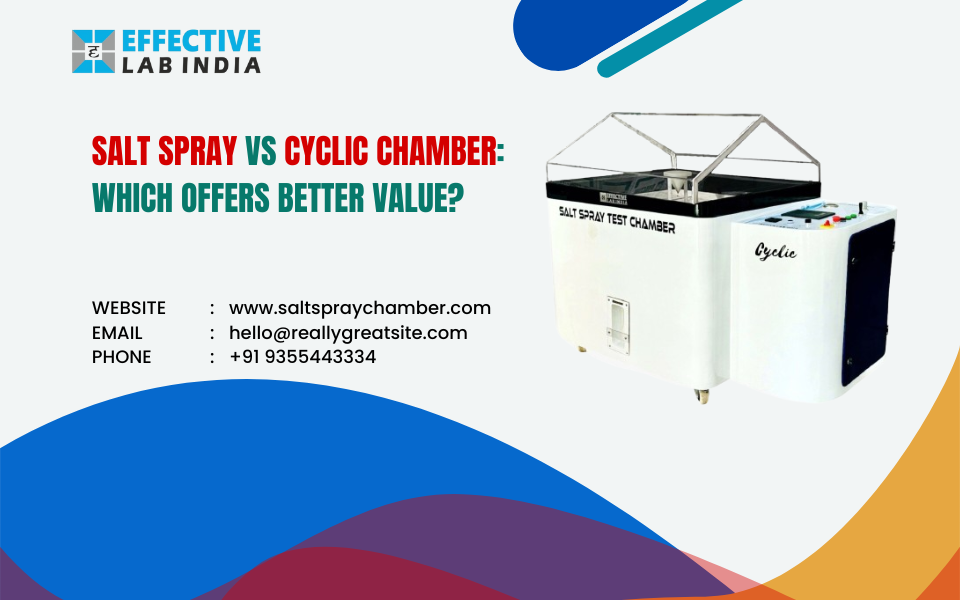by: Effective Lab India /salt spray test / Updated at: 2024-12-27 08:05:18

In sectors like automotive and aerospace, corrosion testing is essential for making sure that coatings and materials can endure harsh conditions over time. Salt spray testing and cyclic chamber testing are two extensively used testing techniques, however, they differ greatly in terms of methodology, uses, and cost-effectiveness. Effective Lab India's blog can assist you in determining which approach is more cost-effective for your company.
Understanding Salt Spray Testing
A standardized technique for assessing a material or coating's ability to withstand corrosion is salt spray testing, sometimes referred to as salt fog testing. This technique simulates a marine or coastal environment by subjecting a specimen to a constant mist of saltwater solution inside a chamber.
Key Features of Salt Spray Testing:
- Simplicity: Conducting the salt spray testing procedure is simple.
- Cost-Effectiveness: The setup and upkeep of salt spray chambers are reasonably priced.
- Criteria Compliance: It is well known because it complies with industrial standards like ASTM B117 & JIS Z 2371.
- Limitations: Because salt spray testing creates a static, unchanging environment, it is sometimes criticized for not correctly reproducing corrosion conditions found in the actual world.
Understanding Cyclic Chamber Testing
A more sophisticated technique for measuring corrosion is cyclic salt spray chamber testing, which switches between different environmental factors like temperature, humidity, and salt spray. This approach is especially useful for sectors that require thorough testing because it more closely resembles real-world situations.
Key Features of Cyclic Chamber Testing:
- Realistic Conditions: It replicates the wet and dry cycles and other environmental variables found in real life.
- Versatility: It works well with a variety of coatings, materials, and intricate corrosion processes.
- Criteria Compliance: It conforms to cutting-edge standards such as ASTM G85 and ISO 12944.
- Cost: Compared to salt spray chambers, cyclic chambers are more costly to buy and run.
Head-to-Head Comparison
Which Offers Better Value?
The choice between salt spray chamber and cyclic chamber testing ultimately depends on your specific needs:
Select Salt Spray Testing in case:
- You require a corrosion assessment that is both economical and timely.
- The environments in which your products will be used will be really basic.
- Adherence to fundamental industry standards is adequate.
Choose Cyclic Chamber Testing if:
- Your goods must withstand challenging, real-world circumstances.
- Priorities include long-term durability and sophisticated corrosion mechanisms.
- Testing must adhere to strict, cutting-edge standards in your sector.
Selecting the Proper Manufacturer
Reliability and quality are crucial when purchasing testing apparatus. One of the top salt spray chamber manufacturers, Effective Lab India provides innovative solutions that are suited to a range of industrial demands. Their chambers are made with accuracy, robustness, and adherence to global standards in mind.
Conclusion
Cyclic chamber testing and salt spray testing each have advantages and disadvantages. For basic corrosion resistance examination, salt spray testing is a cost-effective and practical solution; however, cyclic chamber testing, although more expensive, offers a more realistic depiction of real-world conditions. Effective Lab India advises choosing the approach that complies with industry standards and the needs of your product.
Get in touch with Effective Lab India right now for professional advice and cutting-edge testing facilities. To ensure the durability and dependability of your products, our staff will assist you in making an informed choice.
